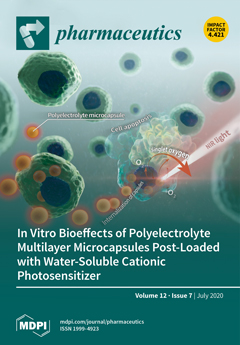Due to their low acid tolerance, a majority of probiotics face diculties with regard to
surviving in the gastric environment long enough to reach the intestinal surfaces where they colonize
and provide health benefits. We prepared a probiotic delivery system that can enhance
[...] Read more.
Due to their low acid tolerance, a majority of probiotics face diculties with regard to
surviving in the gastric environment long enough to reach the intestinal surfaces where they colonize
and provide health benefits. We prepared a probiotic delivery system that can enhance their viability
in acidic conditions by developing a one-step poly-L-lysine (PLL) coating process. We determined
whether the coating process was successful by measuring the zeta potential and observing it with
confocal scanning microscopy. PLL-coated L. plantarum (PLL-LP), incubated in a solution of pH 2 for
2 h, exhibited a higher viability (6.86 0.12 log CFU/mL of viable cells) than non-coated L. plantarum
(non-coated LP), which exhibited only 2.7 1.23 log CFU/mL of viable cells. In addition, a higher
amount of L. plantarum was detected in the feces of mice orally administered PLL-LP (6.2 0.4 log
CFU/g of feces) than in the feces of the control groups. In addition to enhancing probiotic viability in
pH 2 solution, the PLL coating showed no eect on the probiotic growth pattern and the viability of
either freeze-dried L. plantarum or L. plantarum, stored at ?20 C and 4 C, respectively. Overall, these
results indicated that the PLL coating is a promising potential probiotic delivery system.
Full article






